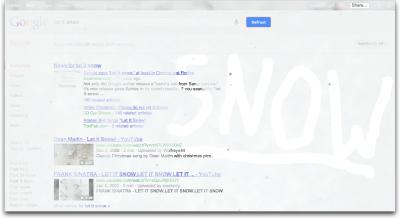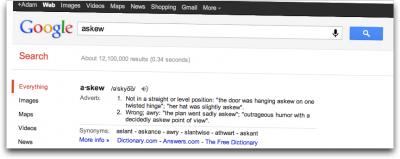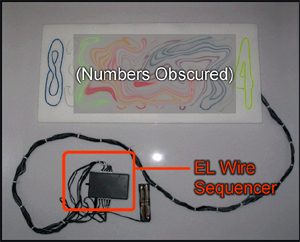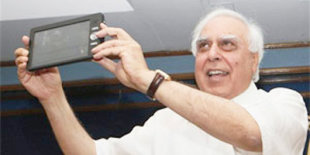In this blog post, Pranesh Prakash briefly analyses the DIT's response to an RTI request on website blocking alongside the most recent edition of Google's Transparency Report, and what it tells us about the online censorship regime in India.
What the DIT's Response Tells Us, and What It Doesn't
We at the Centre for Internet and Society had sent in a right to information request to the Department of Information Technology (DIT) asking for more information about website blocking in India. The
response we got from the DIT was illuminating in many ways. The following are the noteworthy points, in brief:
- Six government officials, and one politician have so far made requests for 'disabling access' to certain online content under s.69A of the Information Technology (IT) Act.
- 68 individual items have been requested to be blocked, those being 64 websites (domain-level blocking), 1 sub-domain, and 3 specific web pages. Seemingly, none of these requests have been accepted.
- The data provided by the government seemingly conflicts with the data released by the likes of Google (via its Transparency Report).
- India's law enforcement agencies are circumventing the IT Act, the Indian Penal Code (IPC), and ultimately the Constitution, by not following proper procedure for removal of online content.
- Either the DIT is not providing us all the relevant information on blocking, or is not following the law.
Conflicting Data on Censorship Requests
The latest
Google Transparency Report, released on October 25, 2011, shows that there were 68 written requests (imaginably taking the form of forceful requests/orders) from Indian law enforcement agencies for removal of 358 items from Google's various. If you take the figures since January 2010, it adds up to over 765.
However, the official government statistics show only eight separate requests having been made to the DIT (which, under the IT Act, is the only authority that can order the blocking of online content), adding up to a total of 64 websites (domain-level), 1 sub-domain, and 3 specific web pages. Of these only 3 are for Google's services (2 for Blogger, and 1 for YouTube).
If classified according to presumable reason for seeking of the block, that would be 61 domains hosting adult content; 1 domain (tamil.net.in), 1 sub-domain (ulaginazhagiyamuthalpenn.blogspot.com), and 2 specific pages (video of a speech by Bal Thackeray on YouTube and Wikipedia page for Sukhbir Singh Badal) for political content; 1 for religious content (a blog post titled "Insults against Islam" in Malay); and 1 domain hosting online gambling (betfair.com). It is unclear for why one of the requests was made (topix.net).
Content Removal vs. Content Blocking
Section 69A of the IT Act provides the Central Government the power to "direct any agency of the Government or intermediary to block for access by the public or cause to be blocked for access by the public any information generated, transmitted, received, stored or hosted in any computer resource". The only person through whom this power can be exercised is the 'Designated Officer' (currently Dr. Gulshan Rai of the DIT), who in turn has to follow the procedure laid down in the rules drafted under s.69A ("Information Technology (Procedure and Safeguard for Blocking for Access of Information by Public) Rules, 2009", the 'Blocking Rules').
Because of this, we see everyone from the Secretary of the Public Law and Order Department of Tamil Nadu to the Joint Commissioner of Police of Mumbai and the State President of the Bharatiya Janata Minority Morcha approaching the Designated Officer for blocking of websites.
However, as the data from Google shows, there are many times more requests being sent to remove content. The only explanation for this is that an order to 'block for access... or cause to be blocked for access by the public' is taken to be different from an order for removal of content. Nothing in the IT Act, nor in the Blocking Rules actually address this issue.
Thus, there is a possibility that the forcible removal of content is treated separately from blocking of content. That would mean that while blocking is regulated by the IT Act, forcible removal of content is not. Thus, it would seem that forcible removal of online content is happening without clear regulation or limits.
Role of the Indian Penal Code and Code of Criminal Procedure
There are existing provisions in the Indian Penal Code that provide the government the power to censor book, pamphlets, and other material on varied grounds, including obscenity, causing of enmity between communities, etc. The police is provided powers to enforce such governmental orders. Section 95 of the Code of Criminal Procedure allows the State Government to declare (through an official notification) certain publications which seem to violate the Indian Penal Code as 'forfeited to the Government' and to issue search warrants for the same. After this the police can enforce that notification.
It is clear that this is not the case for any of the content removal requests that were sent to Google.
Police Are Defeating the Constitution and the IT Act
Therefore, it would seem that law enforcement agencies are operating outside the bounds set up under the Indian Penal Code, the Code of Criminal Procedure, as also the Information Technology Act, when they send requests for removal of content to companies like Google. While a company might comply with it because it appears to them to violate their own terms of service (which generally include a wide clause about content being in accordance with all local laws), community guidelines, etc., it would appear that it is not required under the law to do so if the order itself is not legal.
However, anecdotal evidence has it that most companies comply with such 'requests' even when they are not under any legal obligation to do so.
This way the intention of Parliament in enacting s.69A of the IT Act—to regulate government censorship of the Internet and bring it within the bounds laid down in the Constitution—is defeated.
DIT Either Evasive or Not Following Rules
The DIT did not provide answers on:
- Whether any block ordered by the DIT has ever been revoked
- On what basis DIT decides which intermediary (web host, ISP, etc.) to send the order of blocking to
It also provided the minutes for only one meeting of the committee that decides whether to carry out a block, when we had requested for minutes of all the meetings it has ever held. That committee (the Committee for Examination of Requests, constituted under Rule 8(4) of the Blocking Rules) has to consider every single item in every single request forwarded to the Designated Officer, and 68 items were sent to the Designated Officer in 6 requests. Quite clearly something doesn't add up. Either the Committee is not following the Blocking Rules or the DIT is not providing a full reply under the RTI Act.


















































